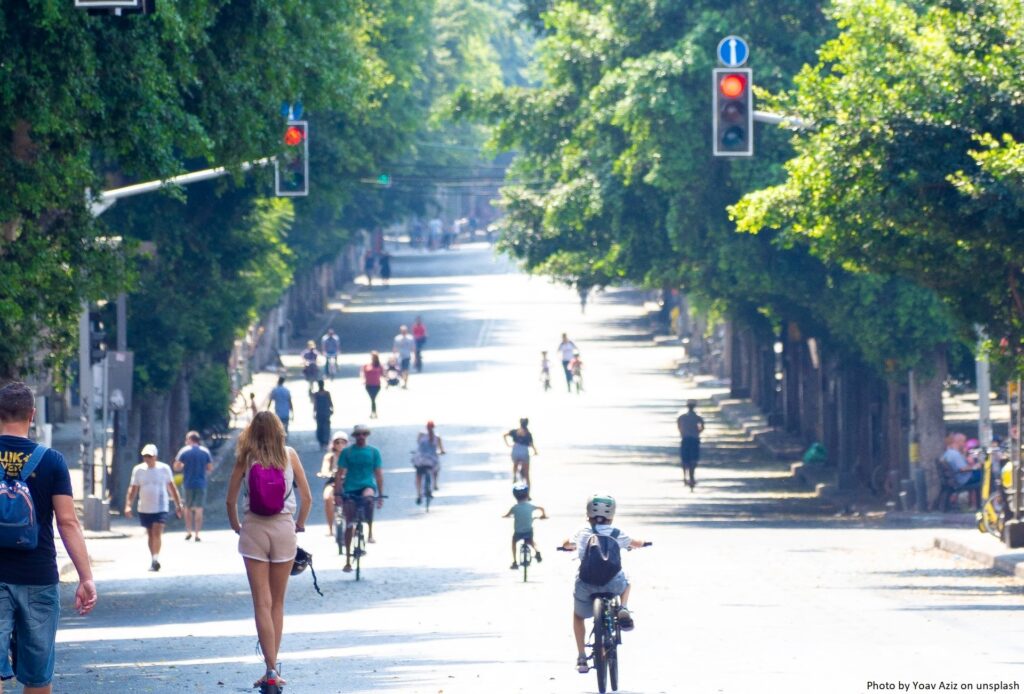Congestion is a major concern for cities and regions across Europe and beyond. Many approaches have been sought to attempt to control and manage traffic flows in order to improve liveability, air quality and economic indicators.
Congestion is caused by a supply and demand imbalance: more cars are on the road than space on the road allows. Depending on the time of day, and the surrounding population and workforce densities, and the conditions of the road and its intersections, demand for the roadway can increase up to and beyond the point of saturation—when the volume of cars using the road is greater than the capacity of the road.
There have been major efforts to tackle congestion by planners, engineers, politicians- from simple road signage to more complex data-driven platforms. Whilst many have succeeded, others have failed to account for negative externalities—the social, economic, and environmental problems they create.
However, there are a variety of reasons for congestion- which are not related to driver behaviour. Understanding congestion mitigation requires understanding its science and politics. Congestion is notoriously difficult to model in a scientific setting. Scientists have been studying congestion—presenting and refining models, and suggesting further research.
Driving cars is an obvious cause. Many people have few alternatives to driving, much of the world’s built environment has been planned and designed to be driven, and new roadway capacity induces driving. Parking also induces driving, and drivers add to driving distances and congestion while searching for parking.
Lack of safety is also a key reason- and a high number of crashes adds to congestion. In 2021, 40,000 people died in traffic collisions in the United States. That figure is relatively small compared to the total number of collisions every year. More than 12 million vehicles were involved in crashes, fatal or not, in 2019.
Road capacity is also a core reason. A lack of road capacity is the most common explanation for persistent congestion, and thus more roadway capacity is the most commonly proposed solution. However, adding capacity does not reduce congestion- as outlined by the concept of induced demand. The underlying demand for driving exceeds the road space available, so building more roads induces more traffic. Congestion soon returns but with more vehicles affected than before.
This is augmented by urban sprawl which also adds to congestion- as distance between domestic, work and other activities is widened.
Traffic flow actions also affect congestion in negative and positive ways. Transportation engineers have numerous methods for redesigning streets to improve traffic flow and speed up traffic. While straightening and widening roads can provide short-term relief from congestion during peak commute hours and increase vehicle speeds during off-peak hours, the improvements on average are not enough to overcome induced demand or the risks introduced by high-speed drivers.
Traffic flow is also impacted by traffic controls—including intersections, stop signs, stop lights, yield signs, lane merges, and toll collections, to name a few examples. Traffic controls can create congestion by creating traffic bottlenecks and resulting shockwave effects. Conversely, traffic congestion can also be mitigated by improving, removing, or adding traffic controls.
More technologically enabled traffic control (such as traffic light synchronisation and real time traffic sensors) may not be as effective as assumed for reducing congestion. For example in Los Angeles, which was one of the first cities to synchronise all traffic signals, was found by researchers at the University of California, Los Angeles, to fail to solve congestion in the city.
However, an increasing number of cities, counties, and even a few states are beginning to design new and existing streets with traffic safety as the primary concern instead of traffic flow, prioritising “traffic calming” measures like speed bumps, high-visibility crosswalks, protected bike lanes, and road diets (i.e., removing vehicle lanes to make space for alternative modes and traffic calming features). The shift from prioritising traffic safety over traffic flow is an ongoing experiment with inconsistent levels of adoption, but it’s gaining traction in the planning profession.

